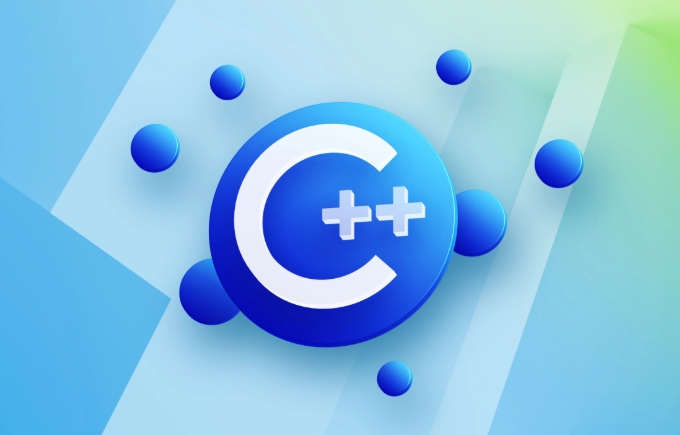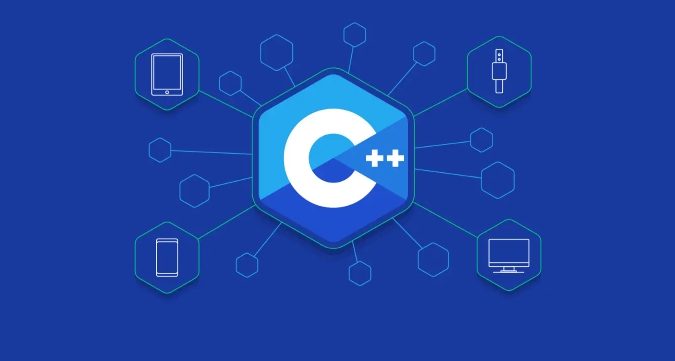A trivial type in C is a type with simple and predictable behavior regarding object creation, copying, moving, and destruction. 1. It must have a trivial destructor. 2. It must have at least one trivial constructor. 3. It must support trivial copy and move operations. Examples include built-in types like int and plain old data structs. Trivial types matter due to performance benefits, memory layout compatibility, and use in standard containers. You can check triviality using std::is_trivial

In C , a trivial type refers to a type that has very simple and predictable behavior when it comes to object creation, copying, moving, and destruction. These types are usually straightforward in memory layout and don’t require complex initialization or cleanup.

What Makes a Type Trivial?
A trivial type is one where:

- The class or struct has a trivial destructor — no custom logic runs when the object is destroyed.
- It has at least one trivial constructor, like a default constructor that doesn't do anything special.
- It supports trivial copy and move operations — meaning those operations can be done by just copying bits, like with
memcpy.
This concept matters most when you're dealing with low-level memory operations, serialization, or performance-sensitive code.
Examples of trivial types include:

- Built-in types like
int,float,char - Plain old data (POD) structs with only data members and no virtual functions or base classes
Why Does Triviality Matter?
Trivial types are important for a few practical reasons:
-
Performance: Because they can be copied with
memcpy, operations on them are often faster. - Memory layout compatibility: You can safely reinterpret their memory as a byte stream, which is useful in networking or file formats.
- Use in standard containers: Some optimizations in STL containers apply only to trivial types.
If you're working with something like std::is_trivial<t></t>, it's likely because you're trying to enforce constraints in templates or optimize certain code paths.
How to Check If a Type Is Trivial
You can use the standard type trait std::is_trivial from <type_traits></type_traits>:
#include <type_traits>
#include <iostream>
struct MyStruct {
int x;
double y;
};
int main() {
std::cout << std::boolalpha;
std::cout << "Is int trivial? " << std::is_trivial<int>::value << '\n';
std::cout << "Is MyStruct trivial? " << std::is_trivial<MyStruct>::value << '\n';
}This prints:
Is int trivial? true Is MyStruct trivial? true
As long as your struct/class doesn’t have:
- User-defined constructors/destructors
- Virtual functions
- Base classes or virtual inheritance
…it’s likely trivial.
Common Mistakes That Break Triviality
Here are a few things that will make a type non-trivial:
- Adding a custom destructor
- Defining a constructor (even if it's empty)
- Using virtual functions
- Inheriting from another class
For example:
struct NotTrivial {
NotTrivial() {} // user-defined constructor
int value;
};Now std::is_trivial<nottrivial></nottrivial> will return false.
So, basically, a trivial type is one that behaves like a plain-old-data type — simple, predictable, and efficient. Keep things minimal in your class or struct if you want to preserve triviality.
The above is the detailed content of What is a trivial type in C ?. For more information, please follow other related articles on the PHP Chinese website!

Hot AI Tools

Undress AI Tool
Undress images for free

Undresser.AI Undress
AI-powered app for creating realistic nude photos

AI Clothes Remover
Online AI tool for removing clothes from photos.

Clothoff.io
AI clothes remover

Video Face Swap
Swap faces in any video effortlessly with our completely free AI face swap tool!

Hot Article

Hot Tools

Notepad++7.3.1
Easy-to-use and free code editor

SublimeText3 Chinese version
Chinese version, very easy to use

Zend Studio 13.0.1
Powerful PHP integrated development environment

Dreamweaver CS6
Visual web development tools

SublimeText3 Mac version
God-level code editing software (SublimeText3)

Hot Topics
 The difference between programming in Java and other languages ??Analysis of the advantages of cross-platform features of Java
May 20, 2025 pm 08:21 PM
The difference between programming in Java and other languages ??Analysis of the advantages of cross-platform features of Java
May 20, 2025 pm 08:21 PM
The main difference between Java and other programming languages ??is its cross-platform feature of "writing at once, running everywhere". 1. The syntax of Java is close to C, but it removes pointer operations that are prone to errors, making it suitable for large enterprise applications. 2. Compared with Python, Java has more advantages in performance and large-scale data processing. The cross-platform advantage of Java stems from the Java virtual machine (JVM), which can run the same bytecode on different platforms, simplifying development and deployment, but be careful to avoid using platform-specific APIs to maintain cross-platformity.
 C in Specific Domains: Exploring Its Strongholds
May 06, 2025 am 12:08 AM
C in Specific Domains: Exploring Its Strongholds
May 06, 2025 am 12:08 AM
C is widely used in the fields of game development, embedded systems, financial transactions and scientific computing, due to its high performance and flexibility. 1) In game development, C is used for efficient graphics rendering and real-time computing. 2) In embedded systems, C's memory management and hardware control capabilities make it the first choice. 3) In the field of financial transactions, C's high performance meets the needs of real-time computing. 4) In scientific computing, C's efficient algorithm implementation and data processing capabilities are fully reflected.
 How to reduce the use of global variables in C?
May 23, 2025 pm 09:03 PM
How to reduce the use of global variables in C?
May 23, 2025 pm 09:03 PM
Reducing the use of global variables in C can be achieved by: 1. Using encapsulation and singleton patterns to hide data and limit instances; 2. Using dependency injection to pass dependencies; 3. Using local static variables to replace global shared data; 4. Reduce the dependence of global variables through namespace and modular organization of code.
 C# and C : Exploring the Different Paradigms
May 08, 2025 am 12:06 AM
C# and C : Exploring the Different Paradigms
May 08, 2025 am 12:06 AM
The main differences between C# and C are memory management, polymorphism implementation and performance optimization. 1) C# uses a garbage collector to automatically manage memory, while C needs to be managed manually. 2) C# realizes polymorphism through interfaces and virtual methods, and C uses virtual functions and pure virtual functions. 3) The performance optimization of C# depends on structure and parallel programming, while C is implemented through inline functions and multithreading.
 c: What does it mean? Data bit c Median domain definition colon usage
May 23, 2025 pm 08:48 PM
c: What does it mean? Data bit c Median domain definition colon usage
May 23, 2025 pm 08:48 PM
In C, the bit field is a structure member that specifies the number of bits, used to save memory and directly manipulate hardware. Example: structMyStruct{inta:2;intb:5;intc:1;}. The advantage of bit domains is memory savings, but there are cross-platform issues, access restrictions and assignments that require caution. Example of usage: structStateMachine{unsignedintpower:1;unsignedintmode:2;unsignedinterror:1;}. Performance recommendations include arranging bit fields by size, avoiding overuse and adequate testing.
 Usage of ? in c Analysis of three-item operator instance in c
May 23, 2025 pm 09:09 PM
Usage of ? in c Analysis of three-item operator instance in c
May 23, 2025 pm 09:09 PM
The syntax of the trigonometric operator in C is condition?expression1:expression2, which is used to select and execute different expressions according to the condition. 1) Basic usage example: intmax=(x>y)?x:y, used to select the larger value in x and y. 2) Example of nested usage: intresult=(a>0&&b>0)?a b:(a==0||b==0)?a*b:a-b, used to perform different operations according to different conditions. 3) Error handling example: std::stringerrorMessage=(errorCode==0)?"Successful&quo
 Debunking the Myths: Is C Really a Dead Language?
May 05, 2025 am 12:11 AM
Debunking the Myths: Is C Really a Dead Language?
May 05, 2025 am 12:11 AM
C is not dead, but has flourished in many key areas: 1) game development, 2) system programming, 3) high-performance computing, 4) browsers and network applications, C is still the mainstream choice, showing its strong vitality and application scenarios.
 Usage of c Typical application scenarios of logical non-operators
May 23, 2025 pm 08:42 PM
Usage of c Typical application scenarios of logical non-operators
May 23, 2025 pm 08:42 PM
The usage of logical non-operator! in C includes: 1) Basic usage: inverse the Boolean value; 2) Conditional judgment: simplify the code, such as checking whether the container is empty; 3) Loop control: processing elements that do not meet the conditions; 4) Function return value processing: determine whether the operation has failed. Pay attention to potential pitfalls such as pointer processing and operator priority when using!, but it can help write more concise and efficient code.






